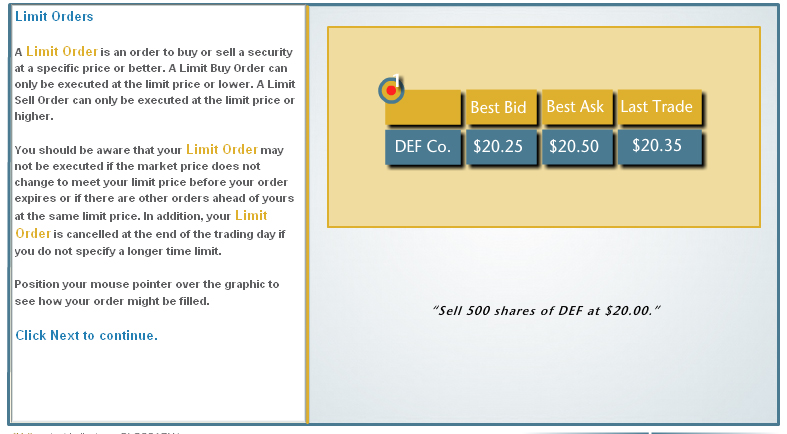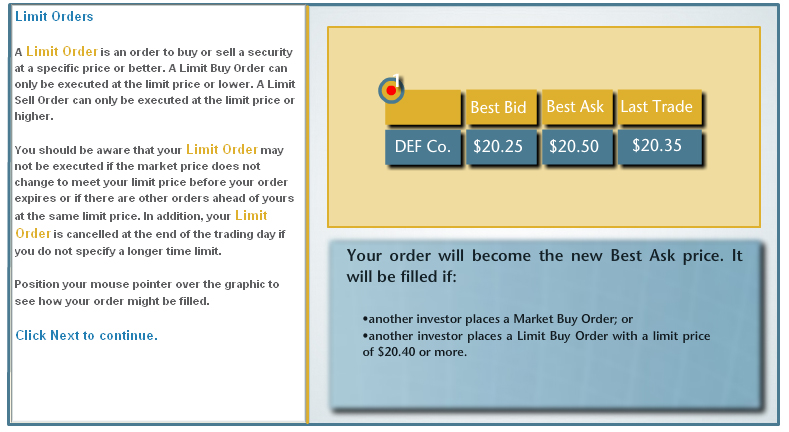The Toronto Star has some details regarding the Equitable Trust fraud:
More than 1,000 condo owners across Toronto fear they are on the hook for millions of dollars as victims of an alleged property fraud.
Lawyers estimate the total misappropriation may exceed $20 million.
Manzoor Moorshed Khan, president of Channel Property Management, borrowed millions against at least five buildings without their knowledge, according to documents obtained by the Star.
…
“It seems to be a case where a fairly sophisticated criminal fraud has been perpetrated,” Andrew Moor, president of The Equitable Trust Company, said in an interview. He said the suspected scheme “managed to penetrate a longstanding process that has kept us safe.”
…
The Star has learned that at least four condominium corporations managed by Khan’s company were victims in the alleged fraud. Of these, one has filed a lawsuit for $3.1 million against Khan, his company and several financial firms, including Equitable Trust.The suit, filed by owners at 25 Grenville St., a luxury condo with around 200 units in downtown Toronto, alleges Khan registered a fake bylaw without the board’s knowledge that authorized him to borrow more than $3 million against the property, according to court document.
The fraud against Equitable, proud issuer of ETC.PR.A, was reported on August 23; the depature of its CFO on September 12.
UBS announced unauthorized losses:
UBS AG (UBSN), Switzerland’s biggest bank, said it may be unprofitable in the third quarter after a $2 billion loss from unauthorized trading at its investment bank.
London police arrested Kweku Adoboli, a UBS employee, in connection with the loss, according to a person with knowledge of the situation who requested anonymity. City of London police and UBS declined to identify the man.
UBS management aims to “get to the bottom of the matter as quickly as possible, and will spare no effort to establish exactly what has happened,” the bank’s group executive board, led by Chief Executive Officer Oswald Gruebel, said in a memo to staff today.
…
A 31-year-old man was arrested at business premises in central London at 3:30 a.m. on “suspicion of fraud by abuse of position,” City of London Police Commander Ian Dyson said in a statement today. The man remains in custody while the police investigate, the police said.Adoboli’s LinkedIn page lists him as a director in ETF and Delta1 Trading at UBS investment bank in London. He previously held the position of trade support analyst at the investment bank, according to the LinkedIn profile. A University of Nottingham spokeswoman confirmed that Adoboli graduated from the school in July 2003, earning a degree in Computer Science.
Details are slowly trickling out:
As Switzerland’s central bank imposed a limit on the franc’s appreciation against the euro on Sept. 6, UBS AG (UBSN) trader Kweku Adoboli’s Facebook profile had a plea for his friends: “Need a miracle.”
Just over a week later, at 3:30 a.m. yesterday, police in London arrested the 31-year-old Adoboli on suspicion of fraud by abuse of position. UBS told investors less than five hours later that “unauthorized trading by a trader” it didn’t identify caused a $2 billion loss.
…
Moody’s Investors Service put credit ratings for UBS under review for possible downgrade. The examination will focus on “weaknesses in the group’s risk management and controls that have become evident again,” Moody’s said in a statement. The loss itself “would be manageable for the group given its sound liquidity and capital position.”UBS asked British police at 1 a.m. yesterday to arrest Adoboli, before alerting the U.K. financial regulator or prosecutors, according to two people familiar with the matter. The Financial Services Authority was notified shortly after the police, and prosecutors at the Serious Fraud Office weren’t contacted at all, according to the two people, who asked not to be identified because the investigations are private.
UBS declined yesterday to say how the trading allegedly lost the bank $2 billion. Gruebel called the loss “unauthorized” and “distressing” in an e-mail to employees, without giving details. No client positions were affected, the Zurich-based company said in the statement, issued on the third anniversary of Lehman Brothers Holdings Inc. (LEHMQ)’s collapse.
Securities regulators are publicizing a request for comments:
The CSA, and the Investment Industry Regulatory Organization of Canada (IIROC) and the Mutual Fund Dealers Association of Canada (MFDA) (together referred to as the self-regulatory organizations or SROs), are working to develop requirements in a number of areas related to a client’s relationship with a registrant. This initiative is referred to as the CRM Project. As part of this work, the CSA has already developed requirements relating to:
• relationship disclosure information delivered to clients at account opening
• comprehensive conflicts of interest requirements
These requirements were included in the Rule when it came into force.
The amendments outlined in this Notice relate to the remaining elements of CRM, specifically:
• disclosure of charges related to a client’s account and securities transactions
• account performance reporting
The performance reporting is a welcome feature, but there are no provisions requiring advisors to publicize their composites. They’re allowing dollar-weighted calculations as well, which is craziness, and they are making a big fuss about original cost reporting, which is crazier.
It’s heavily influenced by a report Report: Performance Reporting
And Cost Disclosure:
Only two common investment terms are understood well by more than 2/3 of investors, namely, ‘rate of return’ and ‘Term deposit/GIC interest’. Understanding drops off quickly to the 4 out of 10 level when we talk about synthetic measures like market indices or ‘benchmark funds’. Terms like ‘Management Expense Ratio’ are understood by less than 1/3 of investors.
…
When we look at how investors assess the performance of their portfolio, we find that most people simply assess the amount of money they gained or lost since their last account statement. The use of market indices and benchmark performance is most common among those with the most money invested.
YLO had a filing on SEDI today, but there was nothing of particular interest – just two more days of buying of YLO.PR.B, YLO.PR.C and YLO.PR.D in the familiar daily quantities, followed by a cancellation of all shares held by the firm on September 14.
It was a mixed day for the Canadian preferred share market with PerpetualDiscounts up 7bp, FixedResets down 9bp and DeemedRetractibles winning 12bp. Volatility was at its normal low levels. Volume was low.
| HIMIPref™ Preferred Indices These values reflect the December 2008 revision of the HIMIPref™ Indices Values are provisional and are finalized monthly |
|||||||
| Index | Mean Current Yield (at bid) |
Median YTW |
Median Average Trading Value |
Median Mod Dur (YTW) |
Issues | Day’s Perf. | Index Value |
| Ratchet | 0.00 % | 0.00 % | 0 | 0.00 | 0 | 2.1887 % | 2,177.6 |
| FixedFloater | 0.00 % | 0.00 % | 0 | 0.00 | 0 | 2.1887 % | 3,275.1 |
| Floater | 2.99 % | 3.34 % | 61,341 | 18.90 | 3 | 2.1887 % | 2,351.3 |
| OpRet | 4.81 % | 2.33 % | 62,134 | 1.64 | 8 | 0.0434 % | 2,463.8 |
| SplitShare | 5.37 % | 0.57 % | 52,681 | 0.45 | 4 | 0.0727 % | 2,498.1 |
| Interest-Bearing | 0.00 % | 0.00 % | 0 | 0.00 | 0 | 0.0434 % | 2,252.9 |
| Perpetual-Premium | 5.62 % | 4.49 % | 118,283 | 1.08 | 16 | 0.0861 % | 2,116.2 |
| Perpetual-Discount | 5.27 % | 5.32 % | 114,367 | 14.97 | 14 | 0.0746 % | 2,259.4 |
| FixedReset | 5.15 % | 3.11 % | 206,038 | 2.65 | 59 | -0.0901 % | 2,329.6 |
| Deemed-Retractible | 5.04 % | 4.58 % | 239,357 | 7.81 | 46 | 0.1151 % | 2,201.8 |
| Performance Highlights | |||
| Issue | Index | Change | Notes |
| BAM.PR.T | FixedReset | -1.38 % | YTW SCENARIO Maturity Type : Limit Maturity Maturity Date : 2041-09-15 Maturity Price : 22.86 Evaluated at bid price : 24.26 Bid-YTW : 3.92 % |
| MFC.PR.B | Deemed-Retractible | 1.03 % | YTW SCENARIO Maturity Type : Hard Maturity Maturity Date : 2022-01-31 Maturity Price : 25.00 Evaluated at bid price : 22.53 Bid-YTW : 5.97 % |
| MFC.PR.C | Deemed-Retractible | 1.15 % | YTW SCENARIO Maturity Type : Hard Maturity Maturity Date : 2022-01-31 Maturity Price : 25.00 Evaluated at bid price : 22.00 Bid-YTW : 6.11 % |
| PWF.PR.A | Floater | 4.93 % | YTW SCENARIO Maturity Type : Limit Maturity Maturity Date : 2041-09-15 Maturity Price : 21.51 Evaluated at bid price : 21.51 Bid-YTW : 2.45 % |
| Volume Highlights | |||
| Issue | Index | Shares Traded |
Notes |
| BMO.PR.J | Deemed-Retractible | 134,145 | RBC crossed blocks of 60,900 and 29,500, both at 25.01 YTW SCENARIO Maturity Type : Hard Maturity Maturity Date : 2022-01-31 Maturity Price : 25.00 Evaluated at bid price : 25.00 Bid-YTW : 4.56 % |
| IFC.PR.C | FixedReset | 56,050 | Recent new issue. YTW SCENARIO Maturity Type : Hard Maturity Maturity Date : 2022-01-31 Maturity Price : 25.00 Evaluated at bid price : 25.01 Bid-YTW : 4.10 % |
| HSB.PR.E | FixedReset | 53,102 | RBC crossed 44,700 at 27.40. YTW SCENARIO Maturity Type : Call Maturity Date : 2014-06-30 Maturity Price : 25.00 Evaluated at bid price : 27.20 Bid-YTW : 3.21 % |
| RY.PR.G | Deemed-Retractible | 48,778 | TD crossed 17,200 at 24.98. YTW SCENARIO Maturity Type : Hard Maturity Maturity Date : 2022-01-31 Maturity Price : 25.00 Evaluated at bid price : 24.88 Bid-YTW : 4.62 % |
| RY.PR.A | Deemed-Retractible | 48,462 | Nesbitt crossed 25,000 at 25.14. YTW SCENARIO Maturity Type : Call Maturity Date : 2015-05-24 Maturity Price : 25.00 Evaluated at bid price : 25.16 Bid-YTW : 4.36 % |
| RY.PR.B | Deemed-Retractible | 44,020 | National crossed 40,000 at 25.45. YTW SCENARIO Maturity Type : Call Maturity Date : 2015-08-24 Maturity Price : 25.00 Evaluated at bid price : 25.40 Bid-YTW : 4.36 % |
| There were 26 other index-included issues trading in excess of 10,000 shares. | |||
| Wide Spread Highlights | ||
| Issue | Index | Quote Data and Yield Notes |
| GWO.PR.M | Deemed-Retractible | Quote: 25.50 – 25.88 Spot Rate : 0.3800 Average : 0.2843 YTW SCENARIO |
| CM.PR.K | FixedReset | Quote: 26.73 – 26.95 Spot Rate : 0.2200 Average : 0.1513 YTW SCENARIO |
| CM.PR.M | FixedReset | Quote: 27.60 – 27.93 Spot Rate : 0.3300 Average : 0.2731 YTW SCENARIO |
| BAM.PR.K | Floater | Quote: 15.57 – 15.80 Spot Rate : 0.2300 Average : 0.1814 YTW SCENARIO |
| TRP.PR.A | FixedReset | Quote: 25.85 – 26.03 Spot Rate : 0.1800 Average : 0.1416 YTW SCENARIO |
| BMO.PR.L | Deemed-Retractible | Quote: 27.01 – 27.15 Spot Rate : 0.1400 Average : 0.1027 YTW SCENARIO |

